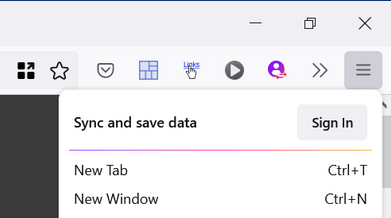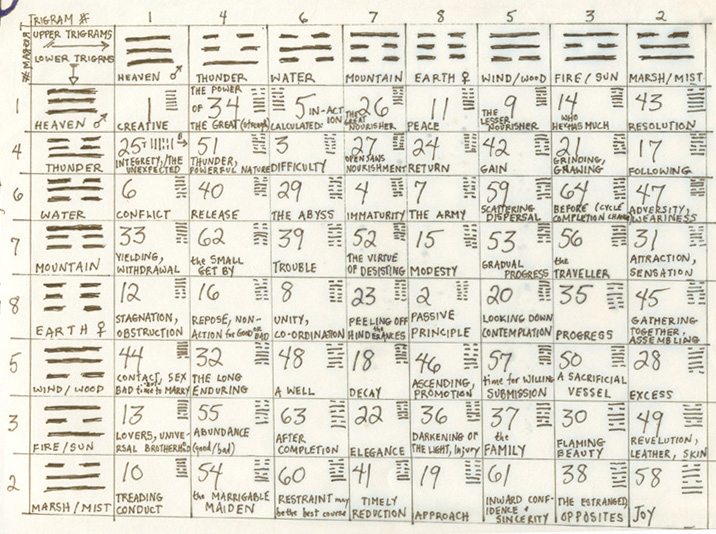The Yì Jīng or the “Book of Changes” (often spelled I-ching in English and I will use that form here) is based on an ancient Chinese divination system which by the late 2nd century BC became associated with the philosophy of Confucianism. Much of the commentary in the book perhaps posthumously ascribed to Confucious himself stands today as the oldest book in the Confucian canon. The system is graphical and imparts meaning to the basic units of un-broken line, Yang and broken line, Yin. These lines are grouped in threes to form trigrams in 8 possible ways, and two of these foundational trigrams can be combined into hexagrams in 64 possible ways.
You can consider Yin and Yang as female/male, weak/strong, yielding/forceful dualities. Everything in the world being composed of these two forces in opposition and flux, the core forces represented graphically in trigram form while the constructed hexagrams describe meanings, intentions, motivations or universal concepts represented graphically by the various combinations of the trigrams stacked in different ways.

In Firefox theres a menu icon at the upper right which is three straight lines stacked on top of each other (Firefox calls this "the hamburger"). When I look at it I always see a trigram of three straight lines, stacked. Those are all unyielding, strong, "male" lines. In the I-ching they represent father or "heaven". Similarly, three yielding (broken), female lines represent mother or "earth".
The Book of Changes lists all of the 64 hexagrams with their primary meaning and associated “commentary”. An example is two Heaven trigrams stacked produces a hexagram of 6 straight lines, heaven on heaven. The meaning in the I-ching is “Creative” or “Initiating”. There is lots of commentary associated to explain this more fully as more and more people have added to it over the years. One possible explanation might be “Heaven in its motion, gives the idea of strength. The superior man, in accordance with this, nerves himself to ceaseless activity.”
To use the I-ching, a petitioner would have a question in mind and then cast a bundle of sticks or throw three coins and based on some accepted rules, determine the component trigrams and resulting hexagram. The hexagram that is determined in this method has a primary meaning and associated commentary that will give the petitioner a framework to examine his question. The purpose being to provide perhaps a fresh perspective on the question or to help the seeker confirm or question their original assumptions. The process is a bit more complicated because the method to determine the lines also creates something called "moving lines" or old lines which are transitioning from one form to the other. This adds nuance and color to the interpretation of the resulting hexagram because it isn't really a single hexagram but one that is transforming into another.
In the coin method as an example we can throw three coins and consider Heads to equal 3 and Tails to equal 2. The first toss will determine the base or bottom of the first trigram, each subsequent throw determining the next line above until a complete hexagram is determined.
There are four outcomes possible:
- 7 Yang = solid line
- 8 Yin = broken line
- 9 Old (or moving) Yang = solid line (drawn with a circle in the middle)
- 6 Old (or moving) Yin = broken line (drawn with an X in the middle)
A moving Yang is moving to become a Yin and a moving Yin is becoming a Yang. The critical point is that the first hexagram is becoming a second one based on the moving lines as indicated. Each hexagram has its own interpretation or meaning to consider.
Over 30 years ago when I was first studying this system I created a cheat sheet to quickly look up the hexagrams and their general meanings.

More information about the I-Ching here:


